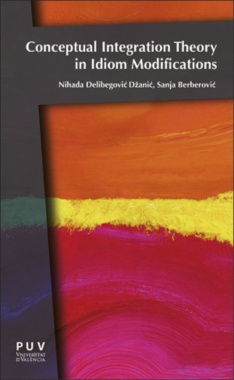The long-standing view that idioms are formally and thus also semantically fixed has been challenged and many studies have shown that idioms are indeed flexible both structurally and semantically to varying degrees. We often come across examples of creatively used idioms, with their original structure disrupted and their semantics affected in the process. This book investigates the phenomenon of innovation and creation in phraseology and examine the limits to innovation, i.e. question whether modified idioms are choreographed by a set of principles or constraints, and whether these principles are coherent. The Conceptual Integration Theory is used to analyze modified phraseological units in order to provide insights into mechanisms which regulate their creation and cognitive organization. This theory not only provides insight into the way we produce, but also gives clues about the ways in which we process modified figurative expressions. The Conceptual Integration Theory seems to offer us the key for unlocking the internal cognitive choreography of idiom modifications presented in our corpus.
- Halftitle
- Title Page
- Copyright
- Contents
- Abbreviations, Symbols and Font Styles
- Table of Figures
- 1 Introduction
- 2 Phraseology
- 3 On Idioms
- 3.1. Idioms Defined
- 3.2. Characteristics of Idioms
- 3.3. Classification of Idioms
- 3.4. The Cognitive Linguistic View of Idioms
- 3.4.1. Idioms Based on Metaphor
- 3.4.2. Idioms Based on Conventional Knowledge
- 3.4.3. Idioms Based on Metonymy
- 3.5. Modifications of Idiomatic Expressions
- 4 On Conceptual Integration Theory
- 4.1. An Insight into Conceptual Integration Theory
- 4.2. Vital Relations
- 4.3. Optimality Principles
- 4.4. Some examples
- 4.5. Compression and Decompression
- 4.5.1. Simplex Networks
- 4.5.2. Mirror Networks
- 4.5.3. Single-Scope Networks
- 4.5.4. Double-Scope Networks
- 4.6. Criticism of the Conceptual Integration Theory
- 4.6.1. Idiom modifications and the blending theory
- 5 Modified idiomatic expressions under conceptual integration magnifying glass
- 5.1. Structural modification
- 5.1.1. Formal Blending
- 5.1.2. Clipping
- 5.1.3. Permutation
- 5.1.4. Reconstruction
- 5.2. Lexical modification
- 5.2.1. Addition
- 5.2.2. Substitution
- 5.3. Mixed types
- 5.3.1. Permutation and Clipping
- 5.3.2. Addition and Clipping
- 5.3.3. Substitution and Clipping
- 5.3.4. Substitution and Addition
- 6 Concluding remarks
- 7 References

